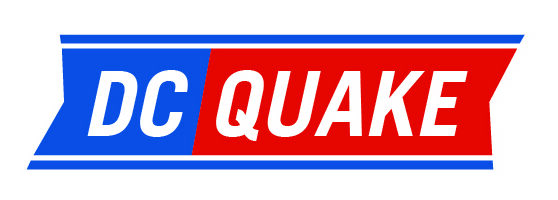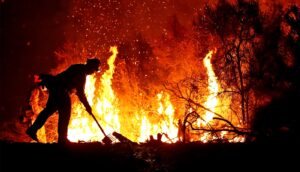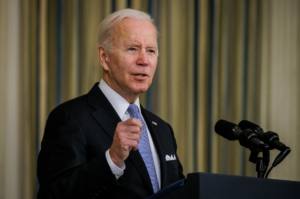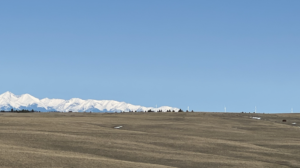Part Two of Brownsville Police Pull-Back Program Shows Success Even in Warm Weather
6 min read
The second round of a community policing experiment that pulled back cop patrols from a strip of Brooklyn’s Brownsville this spring saw 911 calls cut in half as grassroots groups stepped up as problem solvers.
Officials are now looking for other neighborhoods to replicate the success of the Brownsville Safety Alliance, which removed NYPD details from their visible posts on Mother Gaston Boulevard between Pitkin and Sutter avenues from noon to 10 p.m. daily for about a week in late April and early May.
As the police withdrew about one block away from the experimental zone in each direction, the “cure-violence” group BIVO — Brownsville In, Violence Out — kept its eyes on the streets.
Meanwhile, various city agencies and nonprofit groups set up sidewalk tables to offer community services and resources, from boxes of food to free COVID tests.
The BSA pilot program’s first run came in December, when cold weather was credited with helping keep things quiet. No legit 911 calls came in during that five-day stretch.
At a Zoom debriefing on May 13 with dozens of participating groups, Deputy Inspector Terrell Anderson said only five 911 calls were recorded in the program’s zone from April 26 to May 1 — down from 10 during the same period a year ago.
And Anderson, the commanding officer of the 73rd Precinct, noted a significant difference not just in the number of 911 calls but also in the type.
An ‘Environment Change’
The calls this year included an argument over a missing phone; a family dispute in which the caller couldn’t be found; what turned out to be a false complaint about a stolen scooter; another family dispute; and a missing 4-year-old.
During the same period last spring, the 10 emergency calls had included two ambulance runs for a possible drug overdose; a stolen wallet; an “emotionally disturbed person;” a stolen car; and a gun call that ended with an arrest.
“What I believe is the environment change and just the outreach and the people and just the vibe along Mother Gaston between Pitkin and Sutter did contribute to the change and what kind of calls we got and what we had to deal with,” said Anderson.
The experiment in limited police presence is partly a reaction to what a number of locals have referred to as an “occupation” by the NYPD.
Meg Reiss, chief of social justice at the Brooklyn District Attorney’s Office, which had a table set up on the boulevard, called the new feeling in the streets during the spring pilot “amazing.”
“To capture the spirit of what was going on on the block, and how it made everybody feel and lifted everybody’s spirits, is not something that you can really put in words,” Reiss said during the Zoom meeting. “It’s an intangible, and you have to experience it.”
‘Big Encouragement’
Near the end of the pilot on April 30, BIVO’s Vanessa Johnson stood on Mother Gaston Boulevard as a half-dozen members of the group sat packed into a parked van following an unexpected rain storm.
“The violence interrupters are the first to know what’s going on,” said Johnson, 40, an assistant program manager with the group. “[They] make sure the temperature of the [neighborhood] isn’t high.”
Johnson said the group had intervened in a number of incidents that week, including stopping a group of 16- and 17-year-old girls from fighting a lone teenage girl — allegedly over a boy.
The girl had called her mom for help, but the members of BIVO also showed up to mediate.
“We supported the mom to make sure nothing happened to her daughter,” said Johnson. “They ended up going their separate ways and apologizing to one another.”
When a scooter was reported stolen, members of BIVO accompanied one suspect as he got the paperwork from an auto shop proving he owned the one he had.
And when an irate man tracked his lost phone to a local store — and accused the owner of stealing it — members of BIVO worked to calm the guy down, Howard said during the Zoom debriefing.
But he said one incident — in which the 4-year-old girl was found unattended in a park three hours after going missing — best demonstrated BIVO’s power. He said that the group’s Dushoun “Bigga” Almond sprung into action.
“Bigga from BIVO was able to get folks from public housing to canvas,” Howard said. “It showed the relationship they had with the community.
“To me, that was a big encouragement there,” he added. “I was touched. I’m not going to lie about that.”
Expansion Plans
The first Brownsville Safety Alliance test was held in early December, during five snowy days during which no valid 911 or 311 calls were made in the area. But cure-violence groups were able to respond to low-level incidents without the need for police, NYPD officials said at the time.
At last week’s mayoral debate on WCBS, former mayoral counsel Maya Wiley brought up the BSA when she mentioned a meeting she recently had with violence interrupters and other locals in Brownsville.
“The safest they ever felt was the five days they asked the Police Department to step back so they could prevent violence,” Wiley said.
Mayor Bill de Blasio himself lauded the initial pilot at a January news conference following THE CITY’s coverage. And NYPD Chief of Patrol Juanita Holmes later that month told THE CITY that the project would be expanded to 10 police precincts, starting with Brooklyn and The Bronx.
A plan for police reform the city was required to file this spring — jointly submitted to the state by the mayor’s office and City Council, elected officials — committed to “expanding the Community Solution Program from the initial Brownsville pilot.” But officials in de Blasio’ office and the NYPD did not respond to questions by THE CITY about those plans or the budget behind it.
However, the cure violence group Street Corner Resources confirmed that the expansion has arrived in Central Harlem.
According to group founder Iesha Sekou, her organization is involved in a city task force that seeks to form a new Harlem alliance like the one in Brownsville. She hopes the effort will formalize the work violence interrupters had been doing to get police to step back during the pandemic.
She and her colleagues are speaking with their counterparts BIVO about “how [the Brownsville pilot] worked,” she told THE CITY, adding that her organization has long been working to better its relationship with the 32nd Precinct.
”We’re looking to make it a little more formal and at least give it another test run that is visible to everyone,” she said, “because a lot of what we did was in the dark at night.”
‘OK to Stand Down’
Sekou recounted various incidents over the past months in which her group deescalated situations with police that could have ended in arrest or violence. Among them: when an irate elderly man on a bus was eventually driven home by an officer instead of being arrested, and when Sekou convinced police to withdraw from a confrontation with a group of young Black men during the pandemic curfew.
“We’ve been working on… getting the commander to say to the officers that it’s okay to stand down and stand back and let us intervene where we can,” she said.
Plans for what Harlem’s version of the pilot would exactly look like haven’t been finalized, said Sekou, who added she wasn’t aware of any specific funding for the program yet. But she noted distrust of the NYPD is the biggest challenge in her neighborhood.
“The community needs to understand that this is not us saying, ‘We are working with the police,’” said Sekou, adding: “We’re saying that there are some things with policing that do not work, and that they do not need to handle.”
The NYPD refused to make Anderson or Holmes available to speak about either the Brownsville pilot program or the project’s extension.
During the video conference, Anderson said he’s looking to repeat the experiment as often as monthly, as well as to move it to different locations in the neighborhood — such as Rockaway and Livonia avenues.
When de Blasio was asked earlier this year whether the NYPD supported expanding the effort beyond Brownsville, he answered: “It has my full support, and that’s all that matters.”
This article was originally posted on Part Two of Brownsville Police Pull-Back Program Shows Success Even in Warm Weather






